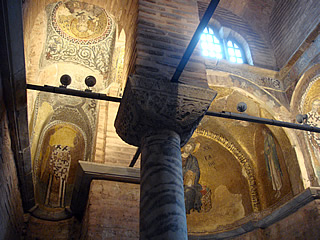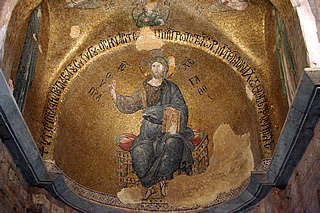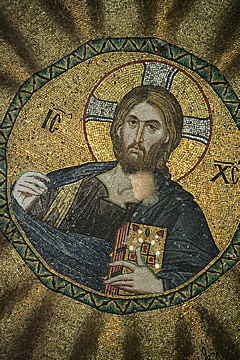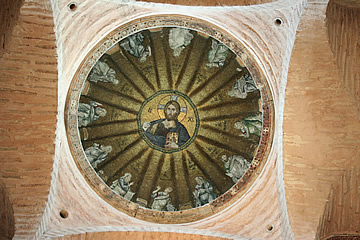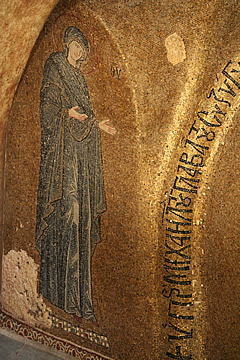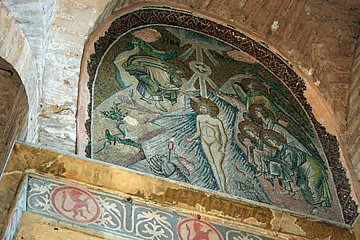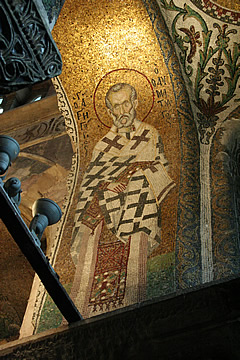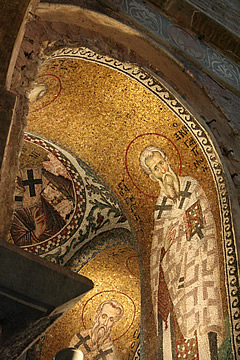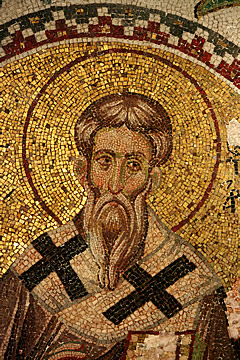

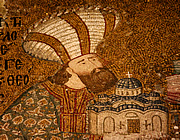
These three churches, dating from Byzantine times but variously restored and rebuilt since, are quite different in size and design, but all with wonderful mosaics: Hagia Sophia, Pammakaristos and Chora which is truly amazing with beautiful frescoes too.
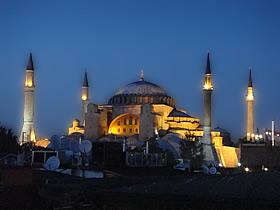
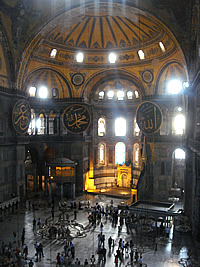
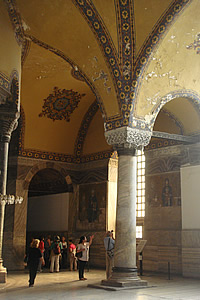
We visited Hagia Sophia as early as possible in the day because later on the queues are horrendous. However, this worked against us for photography as the sun was streaming in onto some of the mosaics making it very difficult!
There were two churches built and destroyed on this site before the current church. The first was probably built by Constantius II, son of Constantine the Great, in 360 A.D. The second by Theodosius II in 405 A.D. Some stone remains of the second church can still be seen in the grounds of Hagia Sophia today.
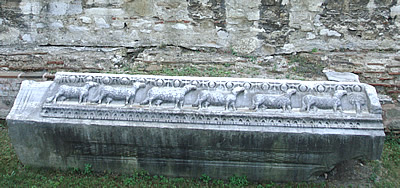
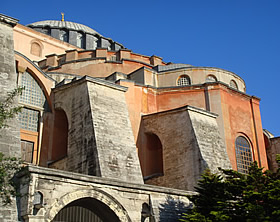
Originally this was an Orthodox church built between 532 and 537 by Emperor Justinian 1st. After the conquest of Constantinople by the Ottoman Turks in 1453, the church was converted into a mosque, and a minaret added. Restoration of the then somewhat dilapidated building continued right up until the 19th century, when the appearance became much as we see it today. Ataturk declared it a museum in 1935.
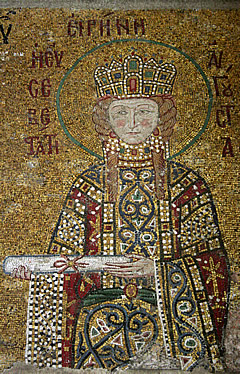
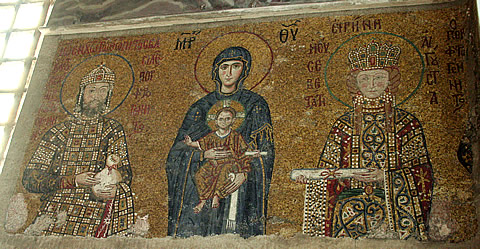
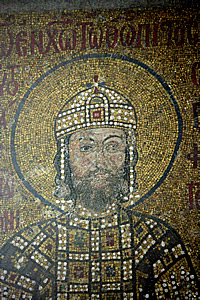
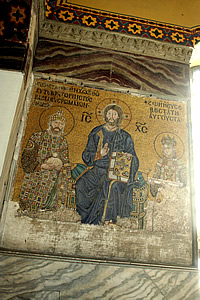
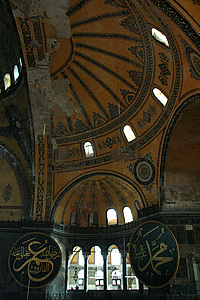
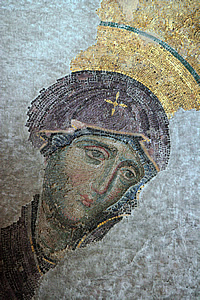
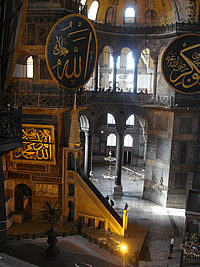
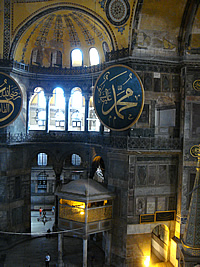
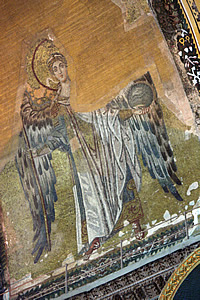
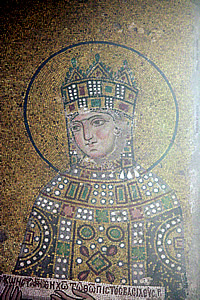
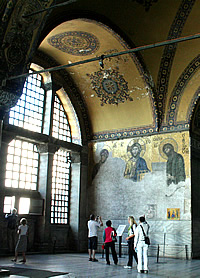
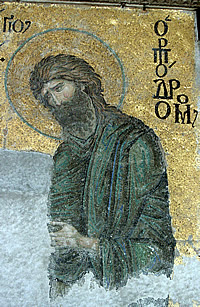
On the south west entrance there is a tenth century mosaic of the Virgin Mary holding the infant Christ flanked by the Emperors Constantine, presenting her with the city, and Jusitinian, presenting her with his church, which we didn't get a photograph of - maybe next time!
Inside, the enormous domed space is impressive. The celebrated mosaics can be seen on the upper level - I particularly like the emperors and empresses. The Comnenus with Empress Irene) and Empress Zoe mosaics are either side of a large window at the south east of the upper level. Zoe, who reigned from 1028 to her death in 1050, is notorious for having married three times, changing the mosaic portrait of her husband each time.
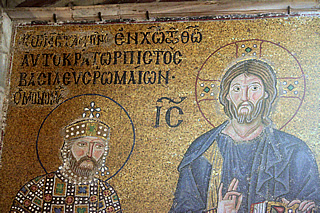
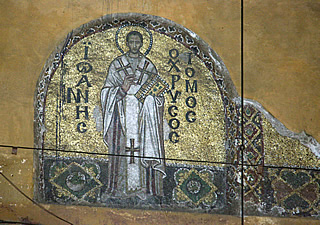
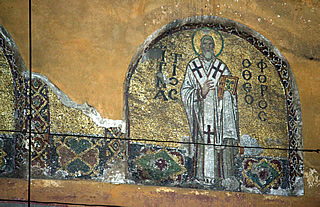
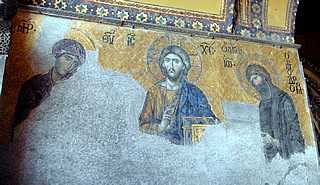
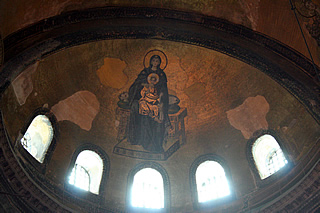
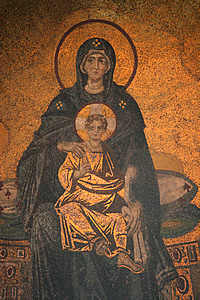
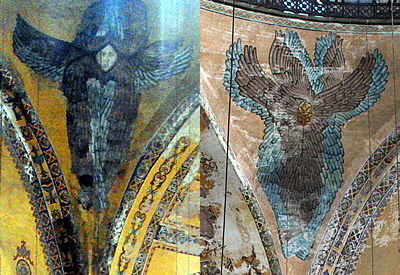
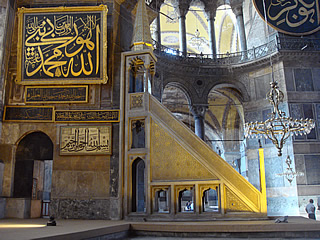
The interior must have been absolutely dazzling when it was first completed.
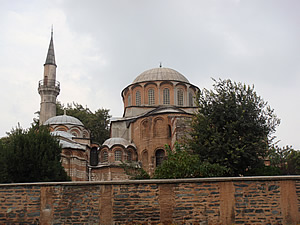
Our hotel organised a taxi to take us to the Chora Church which is otherwise difficult to get to. Chora means "outside the city".
In the sixth century there was a large monastery here which went through a period of decline until the eleventh century when the ruined monastery church was rebuilt. The outside is not particularly special; the very large buttress on it south side is no doubt in place to stop it collapsing down the hill but it is very ugly.
However, the church was restored in the fourteenth century by Theodore Metochites, a minister of the emperor's treasury, with the addition of stunning frescoes and mosaics.
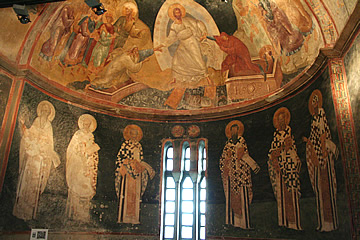
The church was later converted into a mosque at which time its bell tower was replaced by a minaret, as was usual in these conversions. The beautiful frescoes and mosaics were partly covered over with plaster in the seventeenth or eighteenth century but it seems that those in the dome were visible in the late nineteenth century. Lower down the mosaics were covered by wooden doors which the custodian would open for a small fee. In 1945 the church became a museum and the mosaics and frescoes were cleaned and revealed in all their glory.
In plan it consists fundamentally of the main church or naos, orientated east-west, a side chapel on its south side called a paracclesion, an inner narthex and an outer narthex - a narthex is an entrance area on the west side of a church, opposite the altar.
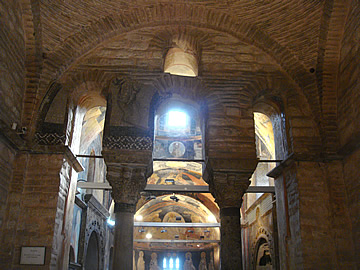
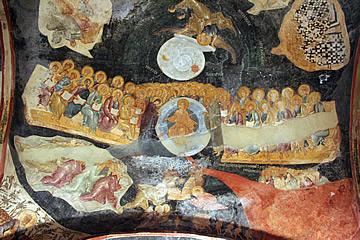
The paracclesion is decorated with frescoes dedicated to the Virgin Mary, and, because this was the funeral chapel of Theodore Metochites, themes of resurrection and salvation.
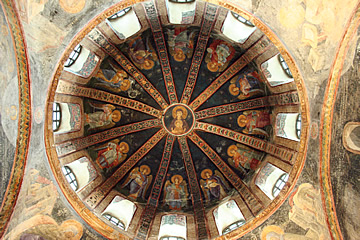
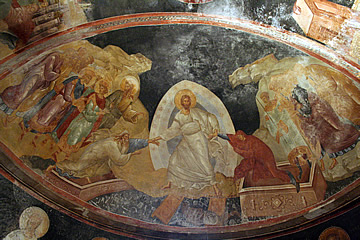
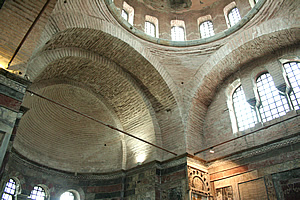
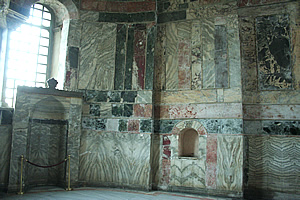
The domed naos has marble walls and floors. In the apse at the eastern end there stands a mihrab from the time when the building was a mosque. The mihrab is a niche which indicates the direction of the Kaaba in Mecca and hence the direction in which Muslims must pray.
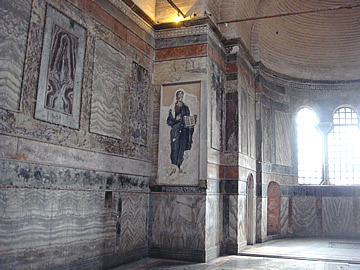
Very little remains of the mosaics which once decorated the naos, only the Koimesis (death of the Virgin) and figures of Christ and the Virgin.
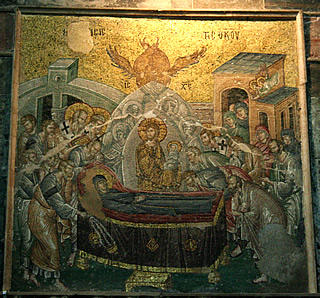
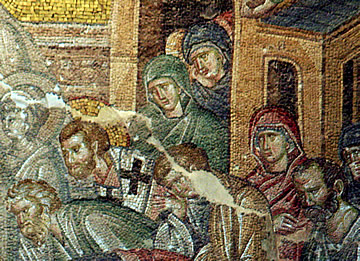
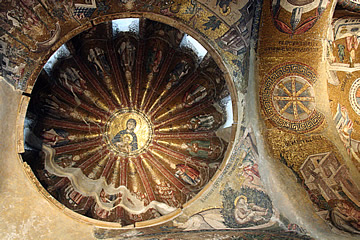
The inner narthex has two domes and is decorated with a wonderful series of mosaics depicting Christ and the life of the Virgin.
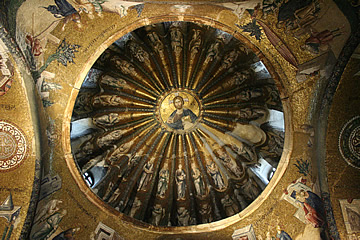
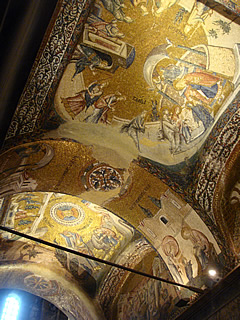
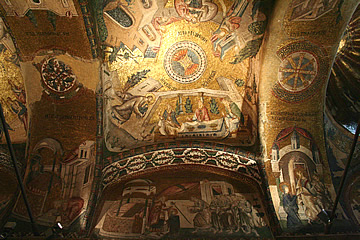
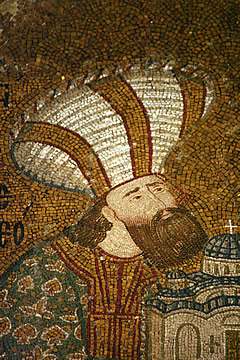
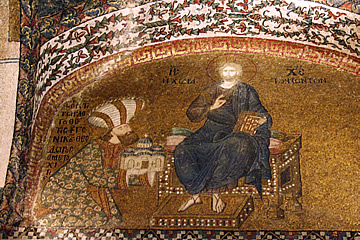
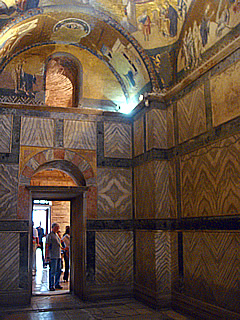
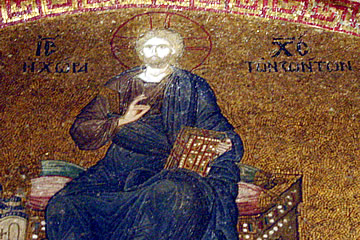
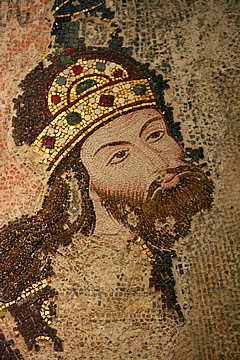
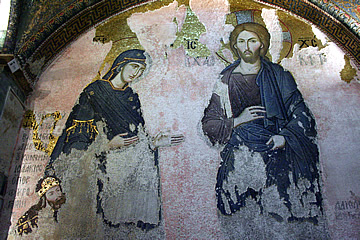
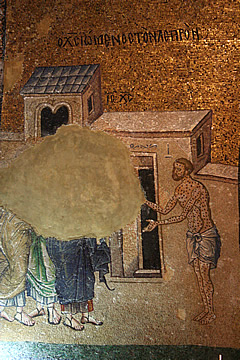
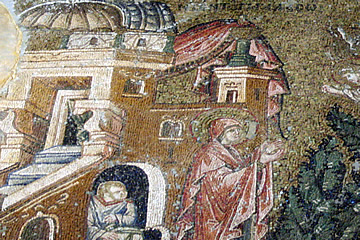
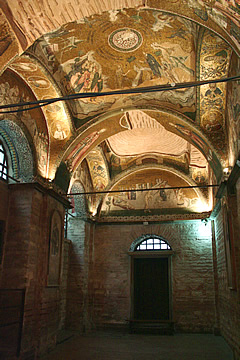
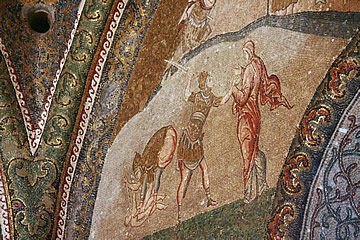
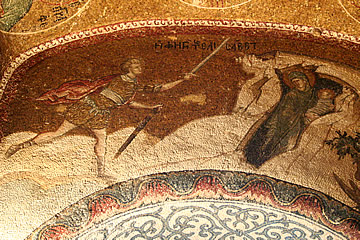
The same long narrow shape as the inner narthex, here there are mosaics of the life of Christ.
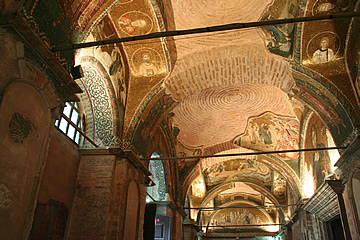
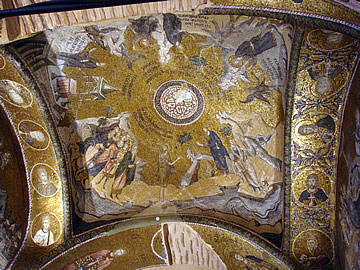
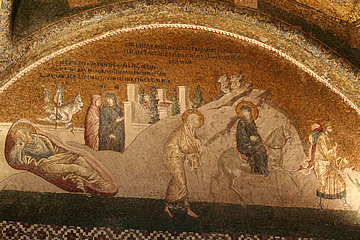
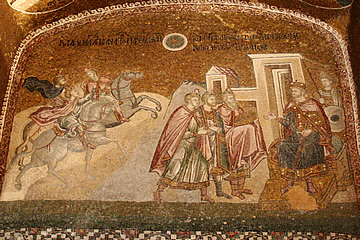
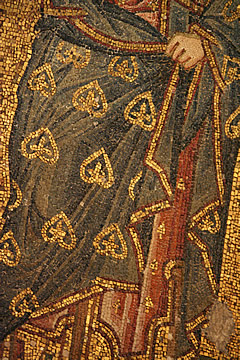
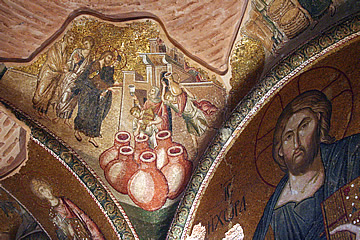
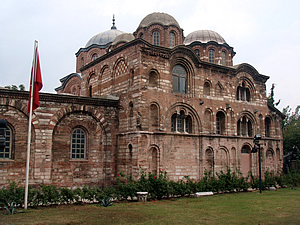
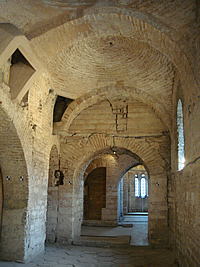
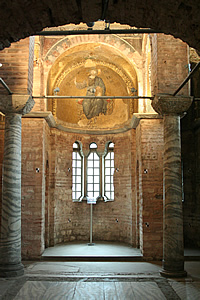
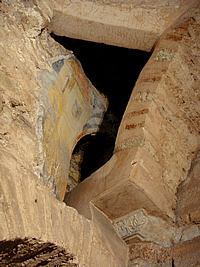
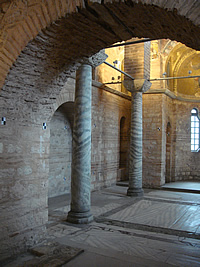
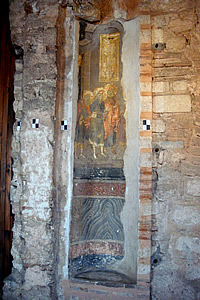
After the glories of Chora we walked down the hill to the little church of Pammakaristos. Built in the thirteenth century it too has some beautiful mosaics and scraps of fresco. The interior is lovely - quite simple and very irregular. We were quite alone here - Chora had been quite crowded - and it was very peaceful and pleasant to have this lovely little church to ourselves.
The church is dedicated to the Virgin 'Pammakaristos' - 'the most blessed'. It was built by Michael Glabas Tarchainotes, nephew of the Emperor Michael VIII Palaeologos between the years 1292-1294. He is buried in the paracclesion of the church which was built in his memory in 1315.
After the Ottoman conquest the church became a nunnery, from 1455 to 1587 it was the seat of the Orthodox Church, later converted to a mosque known as Fethiye.
Afterwards we walked down to the ferry station to get the boat back to the city - as recommended by guides and our hotel - but discovered it was closed and had to resort to a taxi.
